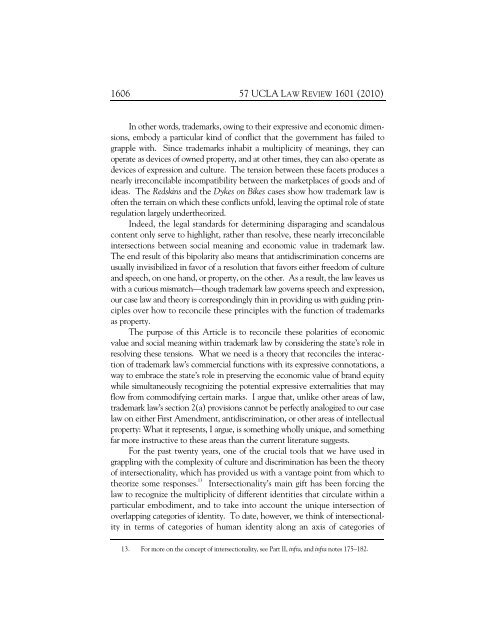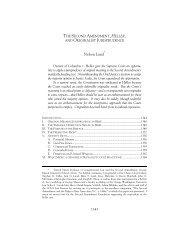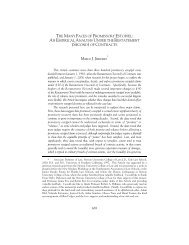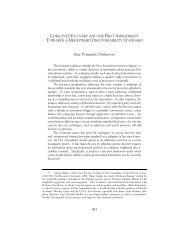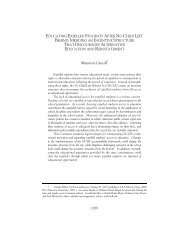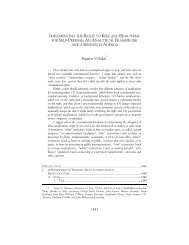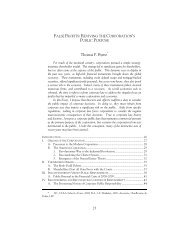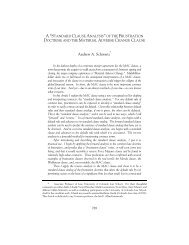Sonia K. Katyal - UCLA Law Review
Sonia K. Katyal - UCLA Law Review
Sonia K. Katyal - UCLA Law Review
Create successful ePaper yourself
Turn your PDF publications into a flip-book with our unique Google optimized e-Paper software.
1606 57 <strong>UCLA</strong> LAW REVIEW 1601 (2010)<br />
In other words, trademarks, owing to their expressive and economic dimensions,<br />
embody a particular kind of conflict that the government has failed to<br />
grapple with. Since trademarks inhabit a multiplicity of meanings, they can<br />
operate as devices of owned property, and at other times, they can also operate as<br />
devices of expression and culture. The tension between these facets produces a<br />
nearly irreconcilable incompatibility between the marketplaces of goods and of<br />
ideas. The Redskins and the Dykes on Bikes cases show how trademark law is<br />
often the terrain on which these conflicts unfold, leaving the optimal role of state<br />
regulation largely undertheorized.<br />
Indeed, the legal standards for determining disparaging and scandalous<br />
content only serve to highlight, rather than resolve, these nearly irreconcilable<br />
intersections between social meaning and economic value in trademark law.<br />
The end result of this bipolarity also means that antidiscrimination concerns are<br />
usually invisibilized in favor of a resolution that favors either freedom of culture<br />
and speech, on one hand, or property, on the other. As a result, the law leaves us<br />
with a curious mismatch—though trademark law governs speech and expression,<br />
our case law and theory is correspondingly thin in providing us with guiding principles<br />
over how to reconcile these principles with the function of trademarks<br />
as property.<br />
The purpose of this Article is to reconcile these polarities of economic<br />
value and social meaning within trademark law by considering the state’s role in<br />
resolving these tensions. What we need is a theory that reconciles the interaction<br />
of trademark law’s commercial functions with its expressive connotations, a<br />
way to embrace the state’s role in preserving the economic value of brand equity<br />
while simultaneously recognizing the potential expressive externalities that may<br />
flow from commodifying certain marks. I argue that, unlike other areas of law,<br />
trademark law’s section 2(a) provisions cannot be perfectly analogized to our case<br />
law on either First Amendment, antidiscrimination, or other areas of intellectual<br />
property: What it represents, I argue, is something wholly unique, and something<br />
far more instructive to these areas than the current literature suggests.<br />
For the past twenty years, one of the crucial tools that we have used in<br />
grappling with the complexity of culture and discrimination has been the theory<br />
of intersectionality, which has provided us with a vantage point from which to<br />
theorize some responses. 13<br />
Intersectionality’s main gift has been forcing the<br />
law to recognize the multiplicity of different identities that circulate within a<br />
particular embodiment, and to take into account the unique intersection of<br />
overlapping categories of identity. To date, however, we think of intersectionality<br />
in terms of categories of human identity along an axis of categories of<br />
13. For more on the concept of intersectionality, see Part II, infra, and infra notes 175–182.


